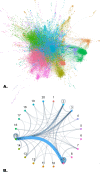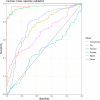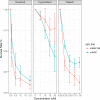Predicting synthetic lethal interactions using conserved patterns in protein interaction networks
- PMID: 30995217
- PMCID: PMC6488098
- DOI: 10.1371/journal.pcbi.1006888
Predicting synthetic lethal interactions using conserved patterns in protein interaction networks
Abstract
In response to a need for improved treatments, a number of promising novel targeted cancer therapies are being developed that exploit human synthetic lethal interactions. This is facilitating personalised medicine strategies in cancers where specific tumour suppressors have become inactivated. Mainly due to the constraints of the experimental procedures, relatively few human synthetic lethal interactions have been identified. Here we describe SLant (Synthetic Lethal analysis via Network topology), a computational systems approach to predicting human synthetic lethal interactions that works by identifying and exploiting conserved patterns in protein interaction network topology both within and across species. SLant out-performs previous attempts to classify human SSL interactions and experimental validation of the models predictions suggests it may provide useful guidance for future SSL screenings and ultimately aid targeted cancer therapy development.
Conflict of interest statement
The authors have declared that no competing interests exist.
Figures





References
Publication types
MeSH terms
Substances
Grants and funding
LinkOut - more resources
Full Text Sources

